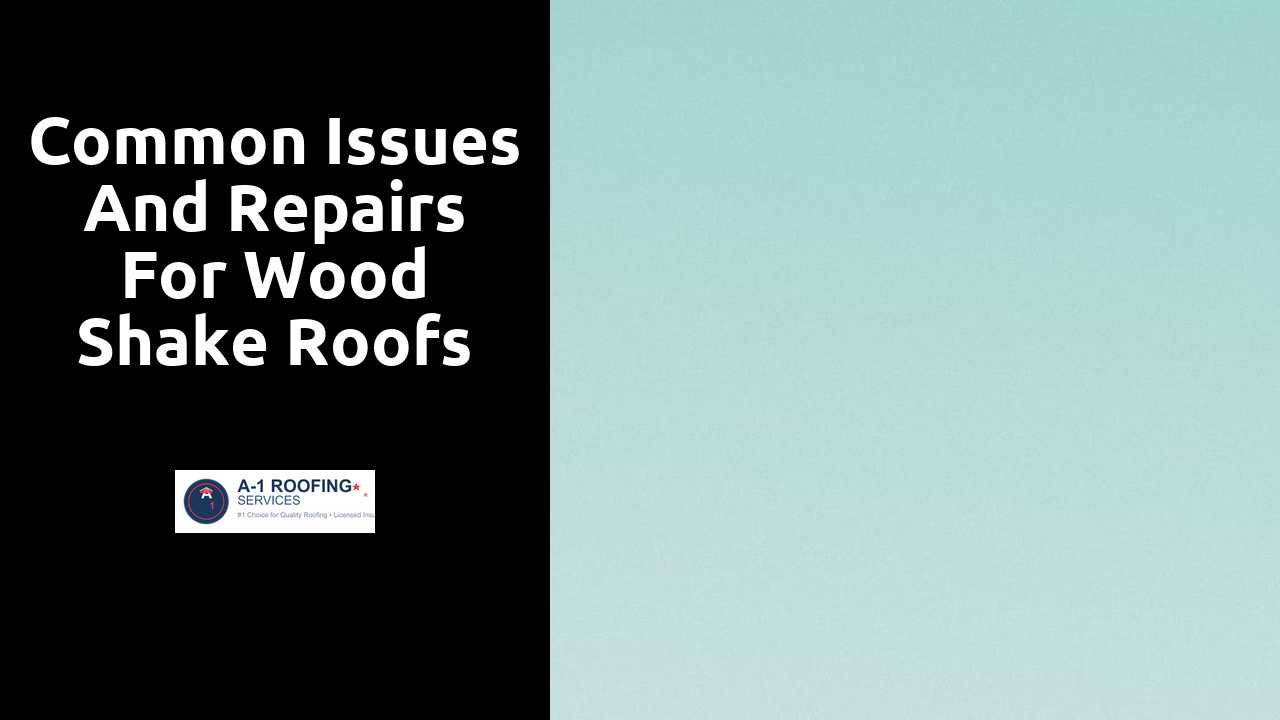
Common Issues and Repairs for Wood Shake Roofs
Table Of Contents
When to Replace Wood Shake Roofs
Wood shake roofs can provide aesthetic appeal and durability, but they are not immune to wear and damage. Homeowners should keep an eye on the condition of their roofs, especially after severe weather events. Signs of deterioration may include visible cracks, curling edges, or extensive discoloration. If shake pieces start to break off, it could indicate that the roof has reached the end of its useful life. A thorough inspection by a qualified professional may help determine the extent of the damage and whether replacement is necessary.
Age is another critical factor in deciding when a wood shake roof should be replaced. Most wood shake roofs last between 20 to 30 years with proper maintenance. Roofs that have surpassed this lifespan often exhibit multiple signs of degradation. Even if an inspection reveals only minor issues, the potential for hidden damage increases as the roof ages. Homeowners should consult with roofing experts to assess both the visible condition and underlying structure for further peace of mind.
More tips and tricks can be found here.
Indicators for Full Replacement
A wood shake roof typically has a lifespan of around 20 to 40 years, depending on the quality of the materials and maintenance. Signs of significant wear include extensive curling, splitting, or rotting of the shakes. If many shakes appear damaged or missing, it may indicate that the roof has surpassed its expected lifespan. In such cases, the overall structural integrity of the roof could be compromised, making full replacement a prudent choice to ensure the safety and longevity of your home.
Additionally, leaks that persist despite repairs can signal the need for a full replacement. Water damage in the attic or ceilings, along with visible mold or mildew growth, often points to underlying issues that patchwork fixes cannot resolve. In situations where frequent repairs are necessary or the overall appearance of the roof has drastically deteriorated, investing in a new roof may provide a more effective and long-lasting solution.
Choosing Quality Replacement Shakes
Selecting durable and aesthetically pleasing materials is crucial when replacing wood shakes. Western red cedar is often preferred due to its natural resistance to decay and insects. Its rich color and ability to weather gracefully make it a popular choice among homeowners. Additionally, other wood options like cypress and southern yellow pine offer different characteristics that might suit specific climates or personal preferences. It’s essential to ensure that the shakes are properly treated to enhance their lifespan and performance.
When evaluating shakes, consider both the thickness and grade of the wood. Thicker shakes usually provide better insulation and durability, essential for withstanding severe weather conditions. Higher-grade shakes come from the heartwood of the tree and exhibit fewer knots and defects. Always inspect the shakes for quality assurance, ensuring that they meet industry standards. This investment not only enhances the roof’s longevity but also contributes to the overall value of the property.
Material Options and Considerations
When considering material options for wood shake roofs, homeowners should evaluate the durability and longevity of different types of wood. Cedar is a popular choice due to its natural resistance to decay and insects. Redwood also offers excellent performance but may be less readily available in some regions. Both materials can provide a distinct aesthetic appeal, contributing to the overall charm of a home. However, it's essential to recognize that these woods require proper maintenance to achieve their maximum lifespan.
Beyond wood species, the thickness of shakes plays a critical role in overall performance. Thicker shakes tend to offer better insulation and can withstand harsher weather conditions. Installation method is another factor worth considering, as certain techniques can enhance the roofing system’s effectiveness. Homeowners may also want to explore treated options that improve fire resistance or prevent rot. Understanding these considerations can help in making informed decisions when replacing wood shake roofs.
Hiring a Professional Roofer
Selecting a qualified roofer is crucial for ensuring a successful replacement of your wood shake roof. Begin by researching local contractors with experience specifically in wood shake installations. Read customer reviews and ask for references to gauge their reliability and craftsmanship. Confirm that any prospective roofer is licensed and insured, which protects you from potential liability should accidents occur during the project.
Communication is also important when hiring a contractor. Ensure they are transparent about the process, materials used, and timelines. A reputable roofer should provide a detailed written estimate outlining the scope of work and costs involved. Discuss any specific concerns or requirements you may have, as this can help establish trust and understanding right from the start.
What to Look for in a Roofing Contractor
Selecting the right roofing contractor is crucial for ensuring that your wood shake roof is repaired or replaced correctly. Start by researching local contractors who specialize in wood shake roofs. Look for proven experience with this specific type of roofing and check their past project portfolios. Customer reviews and testimonials can provide insight into their work quality and reliability.
Verify that potential contractors are licensed and insured to protect yourself from liability in case of accidents or mishaps during the project. Request detailed estimates that outline the scope of work, material costs, and timelines. This clarity will help you compare options and ensure there are no hidden fees. Open communication is important; a good contractor should be willing to address your questions and provide guidance throughout the process.
Related Links
Comparing Wood Shake Roofing to Other MaterialsInstallation Tips for Wood Shake Roofs